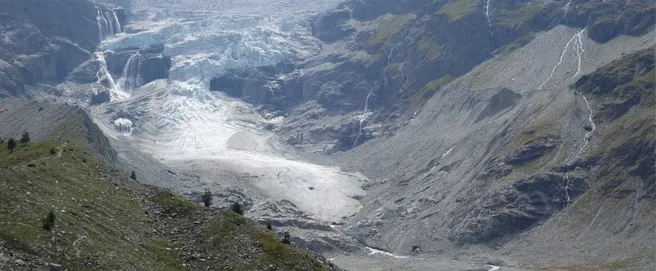In the framework of the DFG funded BIMODAL project, Daniel Draebing conducted fieldwork together with Jana Eichel (former University of Bonn, upcoming Karlsruhe Institute of Technology), Christian Eling, Lasse Klingbeil and Markus Wieland (Institute of Geodesy and Geoinformation, University of Bonn) in the Turtmann glacier foreland in the Swiss Alps in 2014 and 2015. The aim of the work was to identify spatial controls of turf-banked solifluction lobes and their role in paraglacial adjustment. For this purpose, a combination of 2D and 3D Electrical Resistivity Tomography, geomorphic and vegetation mapping, soil texture and moisture sampling were applied and spatial differences analysed. Results are published in the journal “Permafrost and Periglacial Processes” (http://dx.doi.org/10.1002/ppp.1930). The data was used to develop a biogeomorphic model to explain the development of turf-banked solifluction lobes and the role of Dryas octopetala as a bioengineer. The model is published in the journal “Earth Surface Processes and Landforms” (http://dx.doi.org/10.1002/esp.4102).
Recent publications by Daniel Draebing within the BIMODAL project
